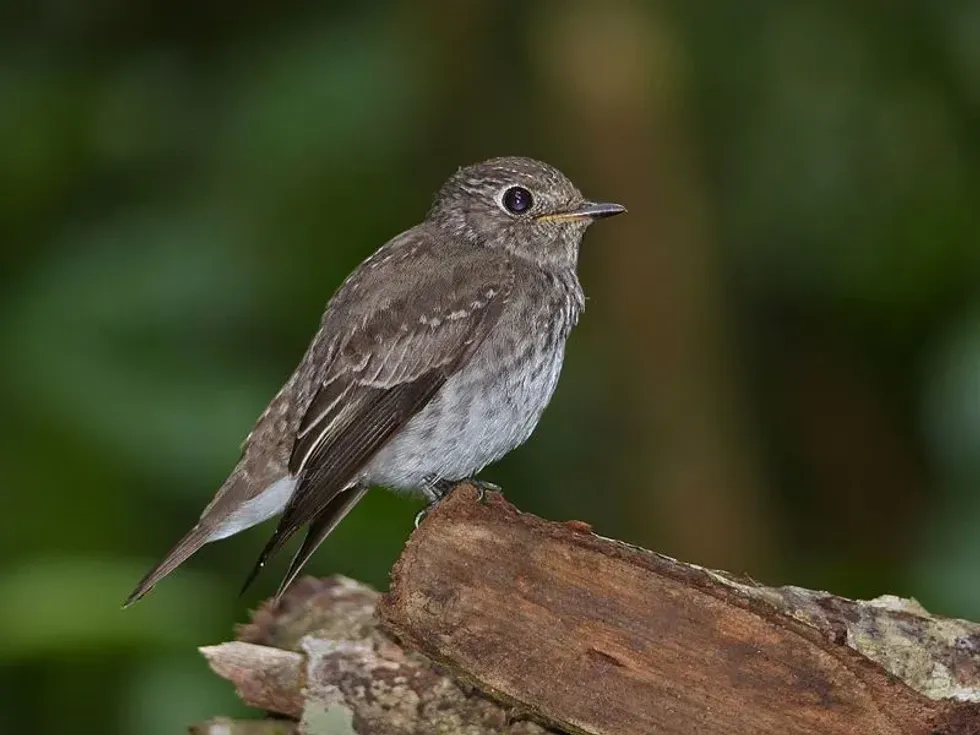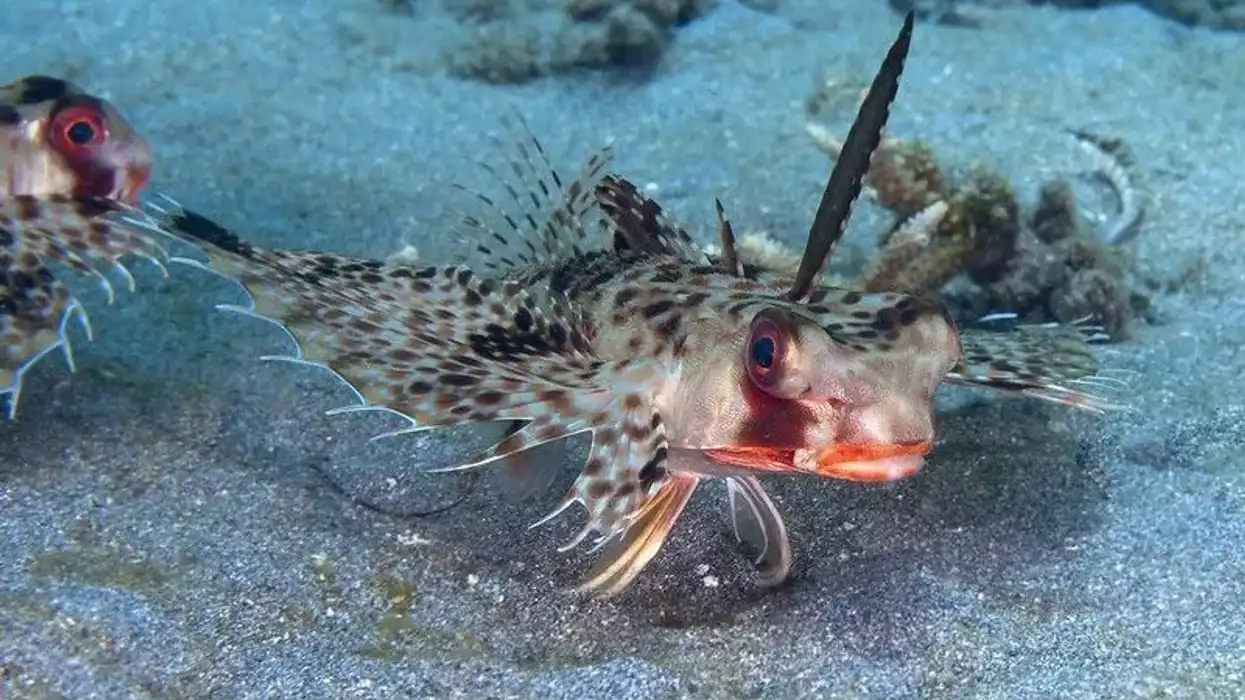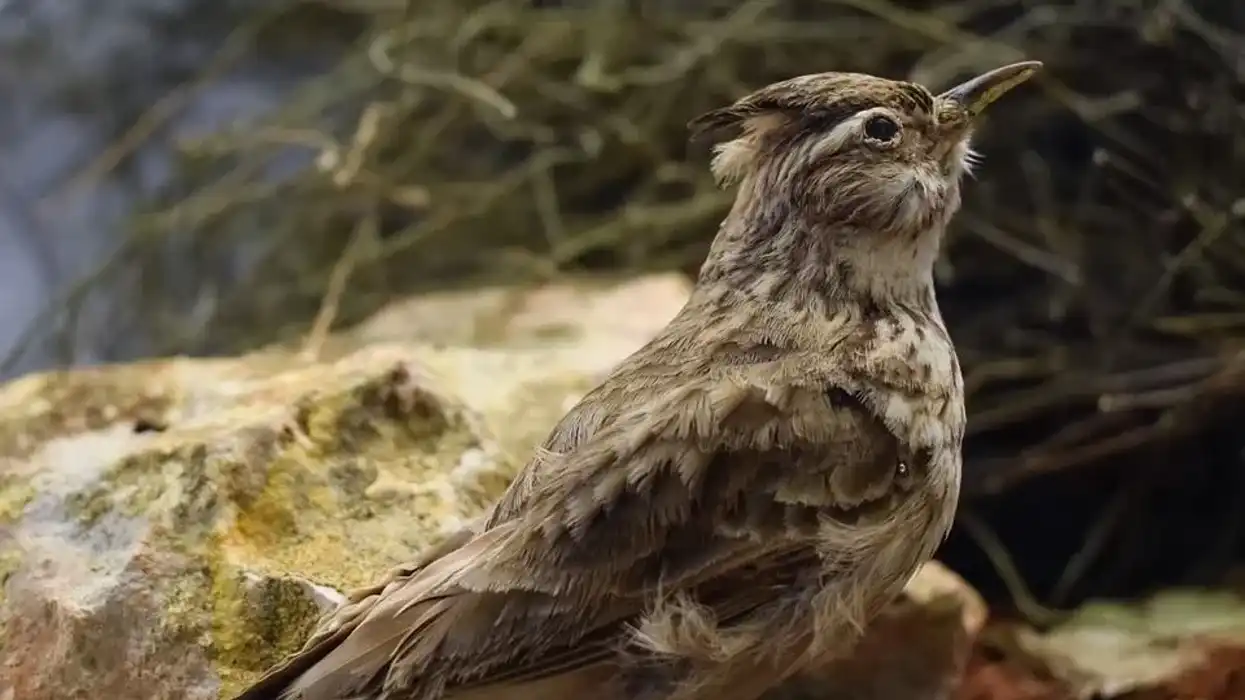The Asian brown flycatcher (Muscicapa dauurica) is a small songbird (passerine bird) in the flycatcher family Muscicapidae which also includes birds such as the great crested flycatcher, the vermilion flycatcher, the scissor tailed and the least flycatcher.
It is 5.1 in (12.9 cm) long (including the tail) has grayish brown upperparts including the head and breast sides with whitish underparts and a white throat and a dark bill with a pale yellow lower mandible.
This species of birds range all over Asia including Japan, on the east of Siberia, and the Himalayas.
This bird is migratory in nature and winters in tropical southern Asia. It is found in open woodland and cultivated areas.
Asian Brown Flycatcher Interesting Facts
What type of animal is an Asian brown flycatcher?
It is a type of bird.
What class of animal does an Asian brown flycatcher belong to?
It belongs to the class of Aves.
How many Asian brown flycatchers are there in the world?
This species of bird is found in large numbers throughout Asia but an exact number of this species has not been recorded yet.
Where does an Asian brown flycatcher live?
These birds range from Asia and Western Europe and also in southern India and Sri Lanka to Indonesia during migration.
What is an Asian brown flycatcher's habitat?
These birds can be found in open woodland and cultivated areas such as mixed broadleaf forests, swamp forests, orchards, trees, mangroves. They are also found in parks and gardens during the migration period.
Who do Asian brown flycatchers live with?
This bird lives in isolation like many other birds of the Muscicapidae family. It only lives in pairs during the mating season.
How long does an Asian brown flycatcher live?
The exact lifespan of the species has not been recorded yet, but on average, a member of the Muscapadae family lives for about three to five years.
How do they reproduce?
This species of bird breeds in Japan, eastern Siberia, and the Himalayas in a nest made of lichen moss and grasses, and other finer materials which are put on a bare horizontal branch or a tree fork. These birds become very territorial during the breeding season and tend to live in pairs.
The male of the species sings a simple melodic song during courtship. The female bird lays four to five eggs that are olive brown in color in her nest which is incubated for a period of 12-14 days by her only.
The male bird feeds the female over this period. The chicks are fed by both parents.
What is their conservation status?
This species of bird has an extremely large range and because of that, its status is Least Concern.
Asian Brown Flycatcher Fun Facts
What do Asian brown flycatchers look like?
The Asian brown flycatcher (Muscicapa dauurica) is 4.3-5.1 in (10.9-12.9 cm) in length and weighs around 0.4 oz (11.3 g) with a wingspan of 7.5-8.2 in (19-20.8 cm). It has grayish brown upperparts including the head and breast sides, the throat is white in color, and large black eyes with a unique white eyering on each eye.
The bill is black, with a pale yellow lower mandible. The legs and feet are dark in color.
It may appear very similar to the brown streaked flycatcher and the dark sided flycatcher.
The juvenile is similar to the adult in appearance, but the upper parts are spotted buffish, and the secondaries and tertials have buffy margins. The underparts are white, and the breast has fine black scaling.
The Asian brown flycatcher juvenile has a dark bill that is bigger than its head and also scaly brown upper parts, breast, and head. Both sexes are similar in appearance.
There are three subspecies of the Asian brown flycatcher (Muscicapa dauurica). Muscicapa dauurica, Muscicapa dauurica siamensis, and Muscicapa dauurica poonensis are the species.
This bird comes from the Muscicapidae family also includes 324 different species of birds.
They come from the same family of Old World Flycatchers.
The origin of its scientific name Muscicapa dauurica comes from the Latin word musca, which means fly, and capere, which means to capture and dauurica refers to Dauria which is a region of the south east side of Siberia which is the name of a nomadic clan in Siberia.
This bird is also very similar to the brown breasted flycatcher, the notable difference is the color of the legs and feet which is pale yellow in the case of the brown breasted flycatcher.

How cute are they?
These birds are small in size and have small legs with a beautiful call and are very cute to look at.
How do they communicate?
They communicate by producing a succession of whistles and brief trills, 'tzee-ti-ti-ti' and a booming 'seet-seet.'
How big is an Asian brown flycatcher?
This bird is 4.3-5.1 in (10.9-12.9 cm) long which is twice as big as the world's smallest bird, the bee hummingbird.
How fast can an Asian brown flycatcher fly?
The exact speed of this in flight has not been recorded yet.
How much does an Asian brown flycatcher weigh?
This bird weighs around 0.4 oz (11.3 g).
What are their male and female names of the species?
There are no specific names for the sexes of the species, one shares the same name as the other.
What would you call a baby Asian brown flycatcher?
The offspring or the juvenile of a bird of this species is called a chick or nestling.
What do they eat?
These birds are insectivores in nature and feed on beetles, butterflies and flies, moths, earthworms, insect larvae, earthworms.
Are they dangerous?
Although these birds are very territorial in nature, they are not dangerous to human beings. They only defend themselves and try to scare the predator or the intruder birds out when they feel threatened.
Would they make a good pet?
No, these birds do not make a good pet because they are migratory in nature and prefer to live in isolation.
Did you know...
Although the diet of this bird is primarily based on insects, but in some parts, these birds have also been found nibbling on fruits but there is not enough evidence to back that claim.
It has grayish brown upperparts and white underparts including the head and breast sides, the throat is white in color, and large black eyes with a unique white eyering on each eye.
It may appear very similar to the brown streaked flycatcher and the dark sided flycatcher.
There are three subspecies of the Asian brown flycatcher (Muscicapa dauurica). Muscicapa dauurica, Muscicapa dauurica siamensis, and Muscicapa dauurica poonensis are the species.
What's the Asian brown flycatcher's call?
The call of this bird consists of a succession of whistles and brief trills, 'tzee-ti-ti-ti' and a booming 'seet-seet.' Occasionally, a sequence of brief trills followed by two to three whistled notes 'chi jo chi-chi-chi cho-chu-chu-chu'.
Do Asian brown flycatchers migrate?
Yes, these birds are migratory in nature. This species of birds range all across Asia, including Japan, eastern Siberia, and the Himalayas. It is migratory in nature and winters in tropical southern Asia, ranging from southern India and Sri Lanka to Indonesia.
Here at Kidadl, we have carefully created lots of interesting family friendly animal facts for everyone to discover! For more relatable content, check out these great crested flycatcher, or scissor tailed flycatcher
You can even occupy yourself at home by coloring in one of our free printable Asian brown flycatcher coloring pages.









